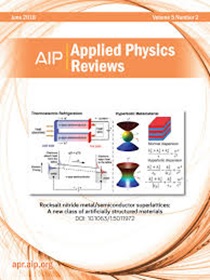Fundamental aspects and electrochemical investigation of metal hydride electrodes: Principles, methods, and practical insights
IF 11.6
1区 物理与天体物理
Q1 PHYSICS, APPLIED
引用次数: 0
Abstract
In the evolving landscape of energy storage technologies, nickel-metal hydride (Ni-MH) batteries maintain significant market relevance despite the prominence of lithium-ion systems. The global Ni-MH market continues to grow steadily, reflecting their continued importance in applications demanding safety, environmental compatibility, and reliability. This review provides a critical analysis of electrochemical techniques used to investigate metal hydride electrodes for Ni-MH batteries. We examine the thermodynamic and kinetic phenomena of hydrogen storage in intermetallic compounds, focusing on the correlation between gas-phase hydrogen interactions and electrochemical processes. The review systematically analyzes various methods including cyclic voltammetry, chronopotentiometry, chronoamperometry, galvanostatic and potentiostatic intermittent titration techniques (GITT and PITT), and electrochemical impedance spectroscopy (EIS). For each method, we discuss theoretical foundations, practical applications, and fundamental limitations when applied to metal hydride systems. Our analysis reveals significant challenges in the direct application of methodologies originally developed for liquid-phase electrochemical systems to solid-state metal hydride electrodes. This methodological transfer without appropriate modifications has resulted in inconsistent data interpretation and discrepancies in reported parameters, particularly for hydrogen diffusion coefficients determined by different techniques. We identify common methodological errors and provide guidelines for more accurate experimental design and data analysis. The critical examination presented in this review demonstrates the necessity for researchers to carefully consider the fundamental differences between liquid-phase and solid-state electrochemical processes when selecting and applying characterization methods. Given the continued importance of Ni-MH batteries in energy infrastructure, establishing reliable characterization protocols is important for advancing the fundamental understanding and technological development of metal hydride electrode materials.金属氢化物电极的基本方面和电化学研究:原理、方法和实践见解
在不断发展的能源存储技术中,尽管锂离子系统占据主导地位,镍氢电池仍保持着重要的市场相关性。全球镍氢市场持续稳定增长,反映了它们在要求安全性、环境兼容性和可靠性的应用中持续的重要性。本文综述了用于研究镍氢电池金属氢化物电极的电化学技术。我们研究了金属间化合物中储氢的热力学和动力学现象,重点研究了气相氢相互作用与电化学过程之间的关系。本文系统地分析了各种方法,包括循环伏安法、计时电位法、计时安培法、恒流和恒电位间歇滴定技术(git和PITT)以及电化学阻抗谱(EIS)。对于每种方法,我们讨论了理论基础,实际应用,以及应用于金属氢化物系统时的基本限制。我们的分析揭示了将最初为液相电化学系统开发的方法直接应用于固态金属氢化物电极的重大挑战。这种未经适当修改的方法转移导致数据解释不一致和报告参数的差异,特别是不同技术确定的氢扩散系数。我们指出了常见的方法错误,并为更准确的实验设计和数据分析提供了指导方针。这篇综述中提出的关键检查表明,研究人员在选择和应用表征方法时,必须仔细考虑液相和固态电化学过程之间的根本差异。鉴于镍氢电池在能源基础设施中的持续重要性,建立可靠的表征协议对于推进金属氢化物电极材料的基本理解和技术发展至关重要。
本文章由计算机程序翻译,如有差异,请以英文原文为准。
求助全文
约1分钟内获得全文
求助全文
来源期刊

Applied physics reviews
PHYSICS, APPLIED-
CiteScore
22.50
自引率
2.00%
发文量
113
审稿时长
2 months
期刊介绍:
Applied Physics Reviews (APR) is a journal featuring articles on critical topics in experimental or theoretical research in applied physics and applications of physics to other scientific and engineering branches. The publication includes two main types of articles:
Original Research: These articles report on high-quality, novel research studies that are of significant interest to the applied physics community.
Reviews: Review articles in APR can either be authoritative and comprehensive assessments of established areas of applied physics or short, timely reviews of recent advances in established fields or emerging areas of applied physics.
 求助内容:
求助内容: 应助结果提醒方式:
应助结果提醒方式:


